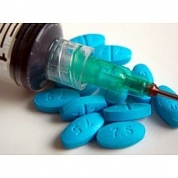Steroids

Pharmacology
Anabolic Steroids are a class of synthetic drugs whose effects mimic the naturally-occurring male hormone testosterone. They are used medically and non-medically to enhance performance (mainly in sport).
They may be administered orally, injected, applied on the skin as a gel or cream and are available as patches. For more information on routes of administration, including harm reduction visit our 'safer injecting' section here.
Pharmacologically, they stimulate both the development of the male characteristics that develop after puberty in both male and female users (androgenic effects) and the production of proteins in muscle and bone tissue (anabolic effects). The extent to which each of these effects occurs is determined by minor variations in the basic chemical structure of each anabolic steroid. With a few medical exceptions, the anabolic effects of these drugs are the primary reason for their use.
Androgenic effects of anabolic steroid use include: increased body hair growth; increased aggressiveness; baldness; a deepening of the voice; acne and increased sexual drive. After stopping using anabolic steroids following regular use, body may experience difficulty in naturally-producing its own testosterone.
A main anabolic effect is an increase in protein production. This leads to an increase in skeletal muscle mass and a reduction in fat, possibly due to a mechanism causing new cells to develop into skeletal muscle cells rather than fat cells. Subsequently, this leads to an increase in strength.
Anabolic steroids are fat-soluble while the barriers of their target cells (cell membranes) are also fatty. Therefore, following administration, anabolic steroids readily enter cells in the body, particularly those in the reproductive tissue, muscle and fat as these are prime targets for their pharmacological action. Here they bind to specific steroid receptors, with the chemical structure of each steroid determining the extent of this binding. The resulting steroid-receptor complex elicits its pharmacological actions through sending signals to other parts of the cell or by activating genes that express the steroid’s effects.
